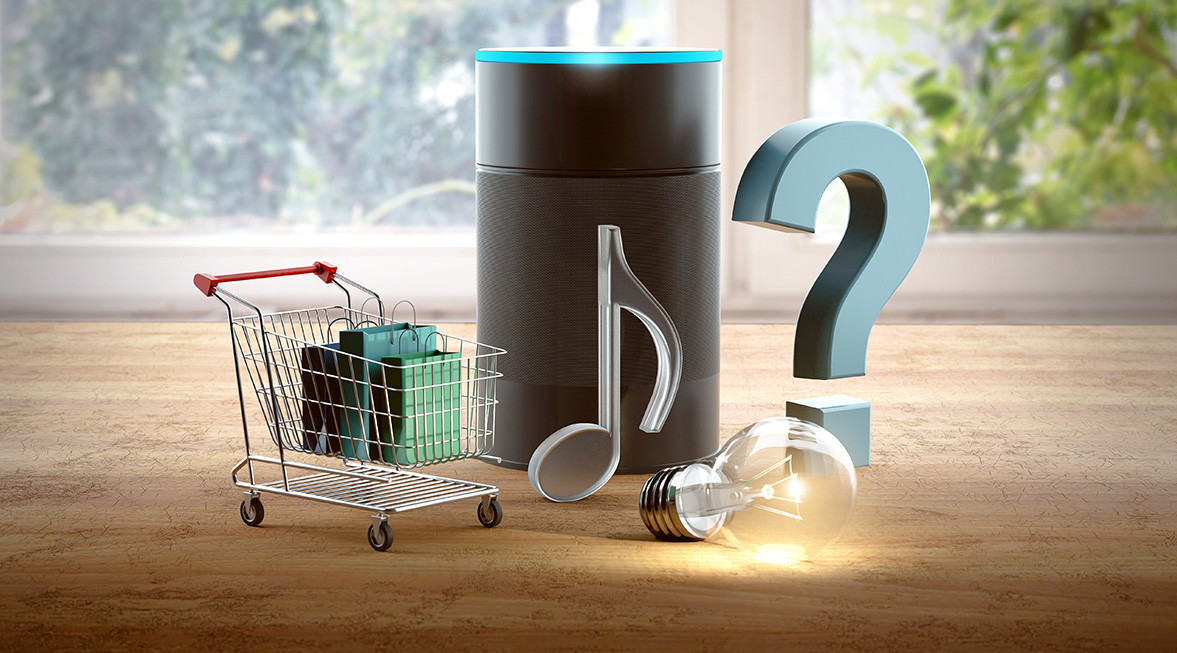The rise of interactive voice is making our world richer and more contextual. Whereas interacting with a mobile phone is a “proactive” process (you pull it out of your pocket or purse, you are purpose-driven in taking this action, you are engaged), voice creates a context-rich “passive” environment that surrounds your whole life. Messages can be brought to you at the right time, even if you are not actively paying attention to a device.
For marketers, the initial wave of hooking into this ecosystem comes via smart scripts and services that integrate into voice services like Alexa, Siri, etc. rather than formal apps or advertising. In the next wave, “moments” will be targetable against a user’s conversational context, location, or needs – predicted or observed. Some of this tech is already here for early adopters but will rise to the mainstream fast.
For marketers who haven’t been paying close attention to voice, adoption of voice services is already on the rise: a full 21 percent of the US population owns at least one smart speaker. Not only that, the number of Amazon Echo, Google Home and similar devices in households has grown 78 percent year-over-year, and more than half of them are used daily. That’s already promising, but scads of products introduced at CES this year supported both Google and Alexa voice products, an indication of even greater potential adoption in the year ahead. Everything from TVs to ovens to window shades and light switches can now be controlled without lifting a finger.
Now, voice assistants are poised to become more integrated in cars. Amazon’s announcement at CES that it has partnered with HERE’s in-car navigation system comes only months after the announcement of Echo Auto, which has already logged over a million pre-orders. Google has also partnered on a handful of after-market devices to allow its assistant to work in cars. While some mid-range and higher-end cars are currently manufactured with built-in voice assistance, the fact that BMW, Daimler and Audi all have an ownership stake in HERE means that’s likely to change – soon.
Voice Assistance on the Go
The nascent field of marketing on smart speakers now has a new parameter to consider: location. For those who were limiting their expectations to ads in voice-driven search and sponsored product listings, there’s the possibility of a lot more to work with now. Knowing that consumers can be reached in their cars while on the go opens a whole new set of opportunities.
While neither of the two leading players in voice assistant applications has yet announced any advertising products, it’s important for marketers to begin to think about how they can target and engage users using their Alexa or Google Assistant data.
The obvious opportunity lies in GPS services. It’s easy to envision someone driving home from work and the services that might come in handy along the way. “OK, Google: order a large pepperoni pizza for pickup in 15 minutes.” Or, “Hey, Alexa, where can I get Kraft Macaroni and Cheese on sale right now?” Ensuring your business is set up to capitalize on these daily moments would be wise for forward-thinking marketers.
Taking it Further with Intelligent Push
Assuming factory-installed speakers will be plugged into other systems, gas stations and the brands that partner with them will also find new ways to engage consumers by leveraging intelligent push messages. If marketers integrate with Waze, they might push a helpful notification regarding a special deal at the Panera that’s just off the next exit. It would also be useful to be able to point out a gas or charging station within convenient distance if fuel is running low.
For drivers who listen to podcasts or stream music in the car, publishers may consider recommending content that is relevant to their location. For the woman who listens to a health and wellness podcast regularly, perhaps an invitation to a nutrition seminar in the area might be a welcome suggestion. Record stores and concert promoters may also want to reach out to drivers who stream music when an artist they like drops a new record or has a show nearby.
Shifting Best Practices
We know that location is an excellent proxy for behavior, and leveraging location data can deliver incredibly useful insights for voice marketing. That said, marketers are wise to keep in mind that drivers are in a very different mindset than active shoppers, or the consumer waiting in line for a coffee and scanning his phone. Understanding the consumer mindset in the moment will be critical to the success of any advertising on a smart speaker. Marketers will need to experiment with length and tone, as well as timing and calls to action.
The possibilities are potentially endless, and likely on the horizon. Voice assistants will be appearing everywhere, throughout the smart home, in the car and likely even in stores, so start considering what the opportune moments might be in your audiences’ day, and how you can reach and engage them in the most helpful way possible.



